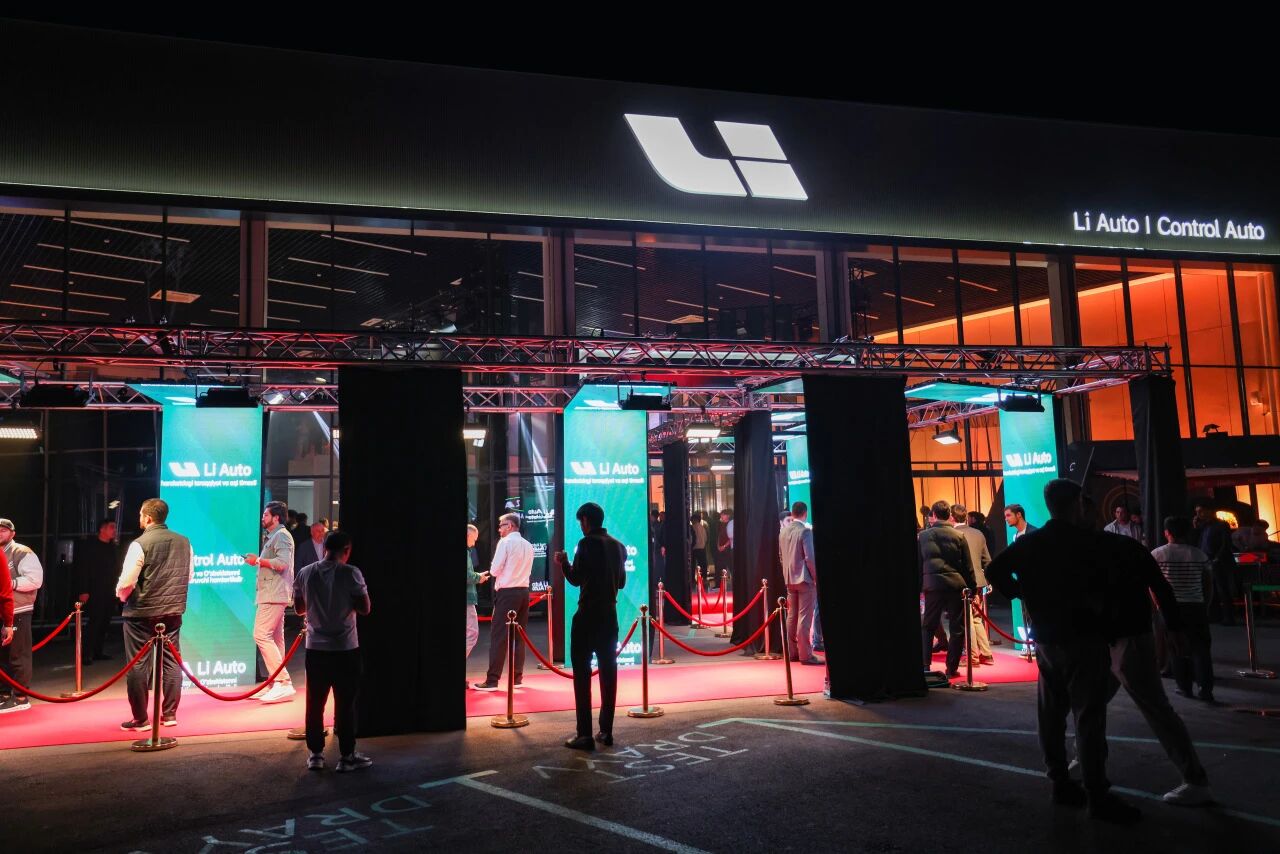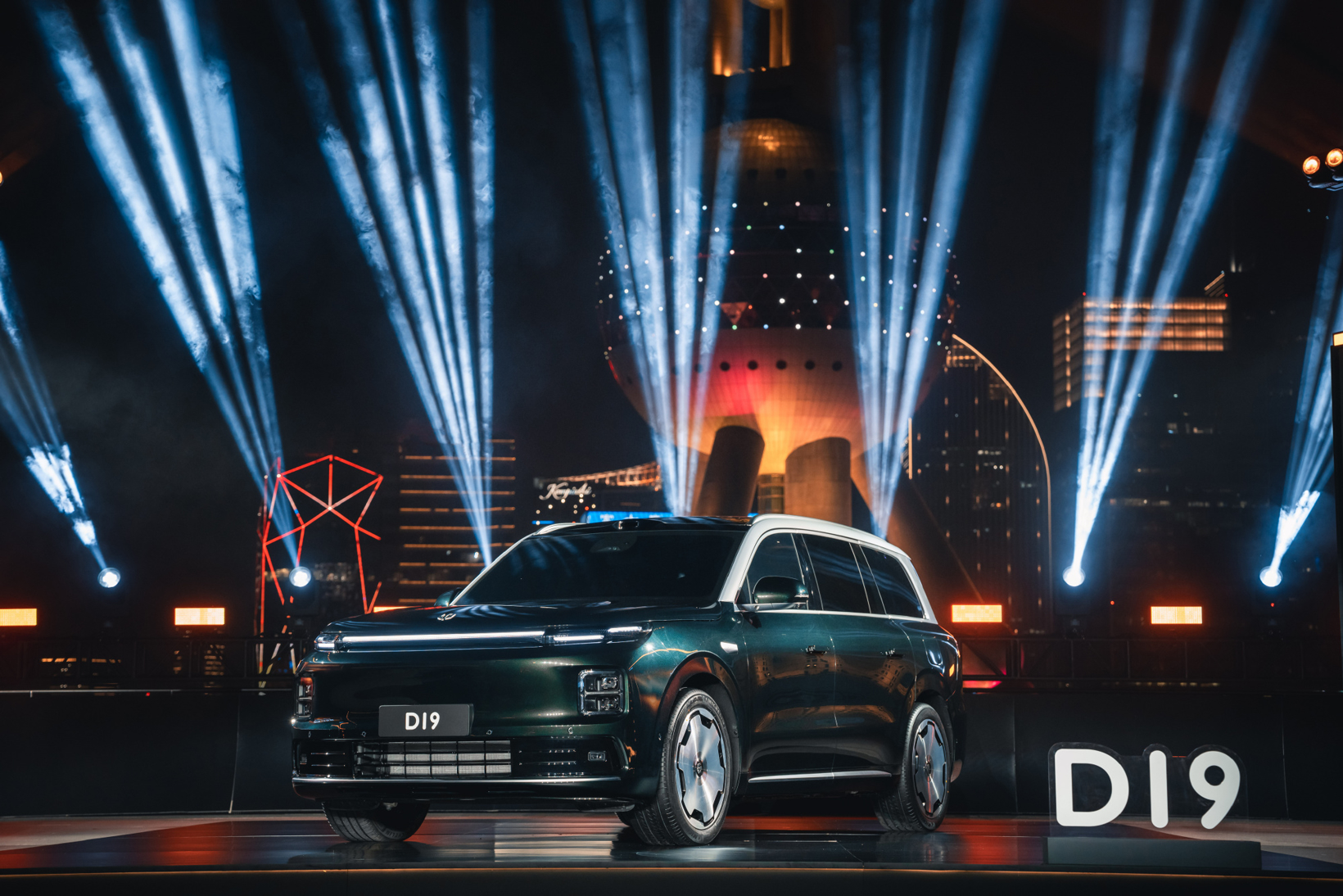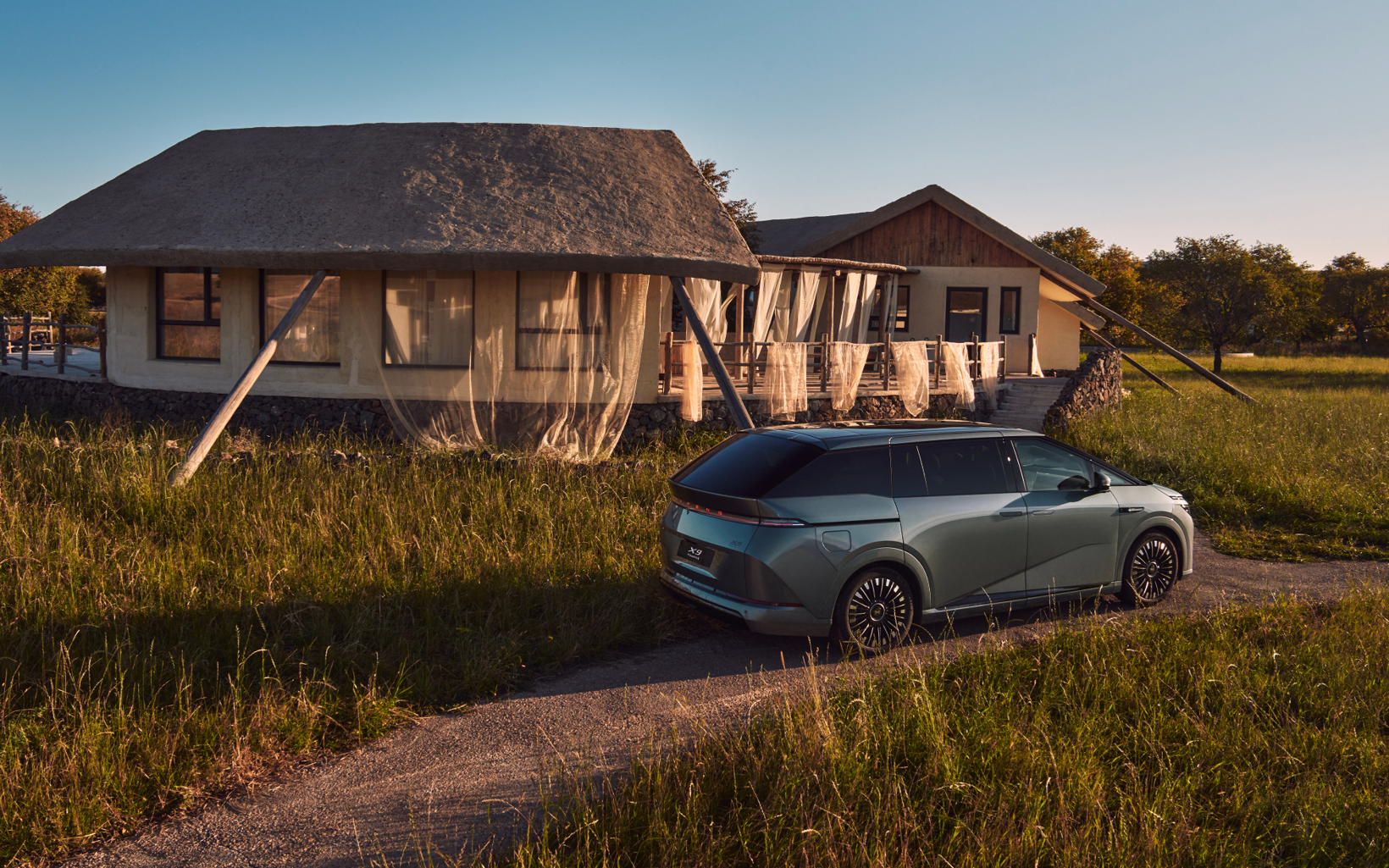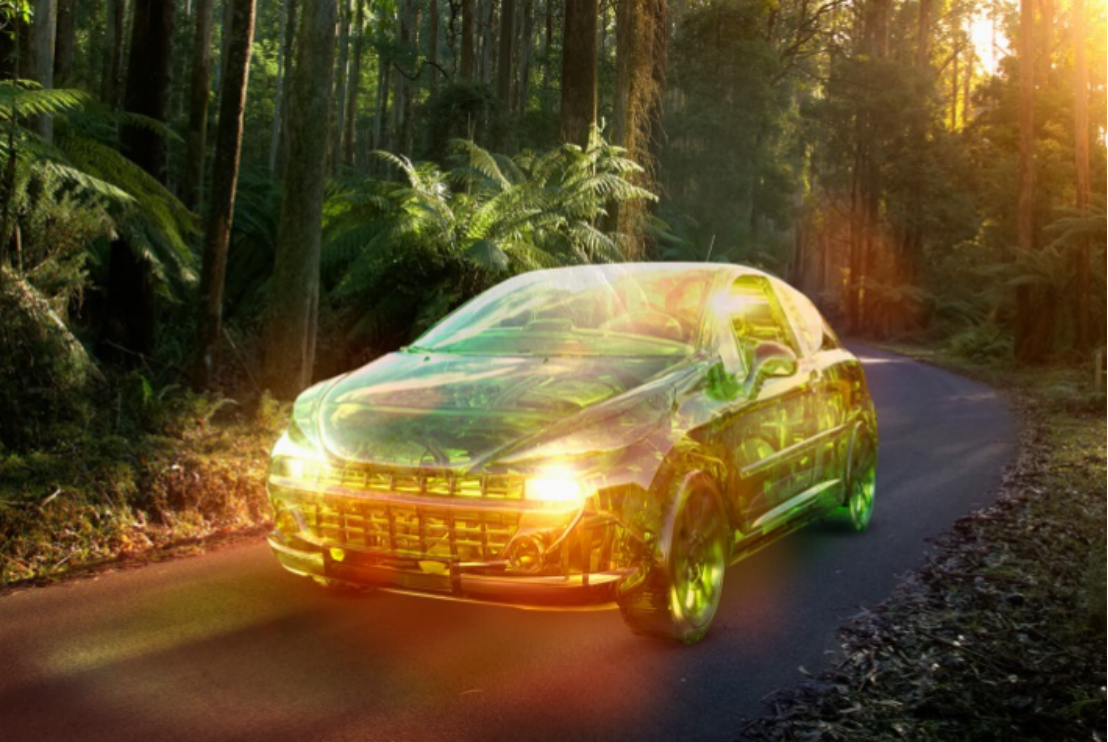Incremental expansion abroad, results seen faster?
The story of range extension seems far from over.
According to customs data, in the first half of 2025, China's total automobile exports reached 3.48 million units, an 18% year-on-year increase, consolidating its global leading position.
Among them,New energy vehiclesThe core driving force behind export growth has shifted from a supplementary role to a mainstream position. In the first half of 2025, the cumulative export of new energy vehicles reached 1.42 million units, a year-on-year increase of 41%, accounting for 41% of the total automobile exports, which is an increase of 7 percentage points compared to the same period last year.
Notably, plug-in hybrid and hybrid vehicles have replaced pure electric vehicles to become new growth poles for exports. Among them, plug-in hybrid pickups are widely welcomed in overseas markets due to their versatility and economy, becoming...New energyA key highlight of commercial vehicle exports.
Coincidentally,GAI Shi Automotive Research InstituteThe "Top 10 Chinese Passenger Car Export Companies in the First Half of 2025" list shows that BYD firmly holds the second position with a volume of 443,000 units. Leveraging its pure electric and hybrid products, BYD has experienced widespread growth in Europe (up 249.8%), North America (up 165.7%), Southeast Asia (up 144.1%), and even the Middle East (up 208.4%). Its explosive growth of 117.8% highlights the accelerated penetration of Chinese new energy vehicles in the global market and validates the effectiveness of the dual drive of pure electric and hybrid technology.
Interestingly, Gasgoo Auto has observed that amidst the global automotive industry's transition to electrification, an intriguing phenomenon is occurring: range-extended electric vehicles, often criticized as "transitional technology" in the Chinese domestic market, are playing a pioneering role in their journey abroad.
In particular, by 2025, domestic emerging car companies have been frequently expanding overseas, taking bigger steps. From Li Auto, Leapmotor, and XPeng to SERES, several Chinese brands have coincidentally chosen extended-range models and technology as the "door opener" to enter overseas markets.
The market for range extenders is continuing to expand from domestic to overseas.
Whether the extended-range approach to going overseas truly "delivers faster results" is a question that not only concerns the globalization pace of individual companies but also reflects the phased logic of global electrification transition.
New forces going abroad, extended range gaining momentum?
The export of the overseas automobile market has long been dominated by traditional and independent car companies. Since 2025, especially around the Munich Motor Show, many emerging Chinese car companies have collectively focused on globalization. Chinese electric vehicles, with their "new thinking," are about to make their way around the world.
In 2025, Li Auto officially launched its globalization strategy. In mid-October, Li Auto's first overseas authorized retail center in the capital of Uzbekistan, Tashkent, officially opened, primarily selling three models in the local market.Electric vehicleProducts Ideal L9, Ideal L7, and Ideal L6.
Ideal L9, Ideal L7, and Ideal L6 are all range-extended models. Regarding why the range-extended series is the first to go abroad, an insider from Ideal Auto stated, "In Central Asia, we have a certain user base and brand awareness, and the range-extended models are more suited to the local market demands." It is reported that before the official announcement of going abroad by Ideal, since 2023, some domestic parallel export companies have already been selling Ideal cars to Middle Eastern and Central Asian markets.

The opening scene of the Li Auto Tashkent retail center, image source: Li Auto.
Coincidentally, Leapmotor, which was once labeled as "half-price Ideal," also brought several range-extended models to the overseas market ahead of Ideal.
In January this year, Leapmotor showcased at the 101st Brussels Motor Show in Belgium, exhibiting for the first time the Leapmotor C10 Extended Range version equipped with Range-Extended Electric Vehicle (REEV) technology, and began deliveries in Europe in March this year.
The C10 is primarily positioned as a B-segment family car, based on Leapmotor's independently developed LEAP 3.0 technology architecture. It features a centrally integrated electronic and electrical architecture, CTC battery-chassis integration, and a flagship intelligent cockpit, and has received a five-star safety certification from E-NCAP.
In addition, the WLTP combined range of this model exceeds 950 km, and the combined CO₂ emissions are as low as 10 g/km. The range-extending technology offers three charging modes: direct current charging (DC), alternating current charging (AC), and an onboard fuel generator. The C10 range extender version supports 65 kW DC fast charging, is equipped with a 215-horsepower electric motor, and has a peak torque of 320 N·m.
According to data from the German Federal Motor Transport Authority (KBA), in May 2025, the registration volume of new Leapmotor C10 vehicles was 212 units, of which 96 were range-extended versions, accounting for 45%. In April, the registration volume of new Leapmotor C10 vehicles was 40 units, with 32 being range-extended versions. From January to May 2025, the registration volume of new Leapmotor C10 vehicles was 311 units, of which 128 were range-extended versions. Additionally, some media reports indicate that data obtained from Leapmotor's official sources show that after the C10 was launched in the UK, it quickly drove the delivery volume to exceed 100,000 units.
After the C10, Leapmotor will continue to launch range-extended models to expand into overseas markets.
On October 16, Leapmotor launched its first flagship product, the D19, targeting the 300,000 yuan price range. The new car is available in both pure electric and range-extended versions. The pure electric version has a battery capacity of 115 kWh, offering a range of up to 720 km. This model is built on a 1000V high-voltage platform and can add 350 km of range with a 15-minute charge. The range-extended version features an engine and dual motor layout, where the generator can both generate electricity and drive the vehicle. In terms of performance, the pure electric version accelerates from 0 to 100 km/h in 3 seconds, while the range-extended version does so in 4 seconds. For intelligent features, the Leapmotor D19 debuts with Qualcomm's dual 8797 chips, offering AI computing power of up to 1280 TOPS, which supports in-cabin large models and VLA world model-assisted driving on the edge.

Image Source: Leapmotor
Leapmotor has disclosed that the arrival of the D series will complete the flagship product matrix and become a key vehicle for Leapmotor's overseas strategy. It is reported that Leapmotor has established nearly 700 outlets integrating sales and services in more than 30 countries across Europe, the Middle East, Africa, and the Asia-Pacific region. Among these, the network in the European market is particularly dense, with over 640 outlets, laying a solid foundation for rapid market penetration.
From January to September this year, Leapmotor delivered over 37,000 units in overseas markets, ranking among the top in core markets such as Germany, France, Italy, and Spain. In August, Leapmotor surpassed BYD to top the pure electric market in Germany, demonstrating strong global market competitiveness and potential.
The main models for XPeng Motors' overseas expansion include G3, P7, G6, G9, and X9.
In June this year, the XPeng X9 topped the Hong Kong MPV market, achieving a monthly sales record of 215 units, setting a new record for monthly sales in the Hong Kong MPV market in 2025. In July, it continued its success in the Thai market, achieving the title of monthly pure electric MPV sales champion with 199 units sold.

Image Source: XPeng Motors
Recently, Xiaopeng Motors Chairman He Xiaopeng announced on Weibo: The Xiaopeng X9 Super Range Extender, a next-generation range extender product for the global market, is finally here. The Xiaopeng Super Range Extender series is about to be fully launched.
According to the declaration information, the new car has a length of 5316mm, a width of 1988mm, a height of 1785mm, and a wheelbase of 3160mm. In terms of power, the new car is equipped with an Innovate Lithium Iron Phosphate battery, a drive motor with a rated power of 110kW and a peak power of 210kW, and an engine with a maximum net power of 110kW.
It is reported that the extended-range version of the X9 is equipped with the industry's only all-domain 800V high-voltage platform, 5C supercharging technology, and a large battery. Its pure electric range will exceed 450 kilometers, and the combined range will exceed 1600 kilometers, completely eliminating range anxiety and charging wait times. Additionally, the XPeng X9 super extended range is equipped with a battery capacity of up to 63.3 kWh.
He Xiaopeng stated on Weibo: "Xpeng is a global AI automotive company, and the current infrastructure, customer demands, and regulations vary across different regions of the world. We must use different technological approaches to meet the needs of global users. The global model Xpeng X9, as the first super extended-range product, is the only vehicle in the industry to achieve a '63.3 kWh large battery + 60L large fuel tank,' with a combined range of 1602 km. It is a large 7-seater model that has undergone rigorous testing in the complex environments of various countries worldwide."
Clearly, whether it is Li Auto, Leapmotor, or XPeng, which has long been deeply involved in the pure electric technology route, all have introduced range-extended products in the face of the vast overseas market.
It is worth mentioning that in September this year, Seres Power held a technology release and exchange meeting at the 2025 Munich International Auto Show, announcing the launch of a new generation of Seres super range extenders, efficient engines, and a new generation of distributed electric drive systems for the overseas market.
The new generation of the Seres super range extender system is built on the "C2E Seres Wing Range Extender Architecture" and "RoboREX Intelligent Control Technology", featuring three main advantages: quietness and imperceptibility, high integration, and high efficiency. The Seres Wing Architecture adopts an All-in-ONE integrated design concept, achieving deep integration of the engine and motor, control system integration, and housing integration, thereby achieving optimal size and cost control. The RoboREX intelligent range extender control technology revolutionarily changes the working method of the range extender, transforming it from passive to active operation, and achieving intelligent active energy management.
In terms of efficiency performance, the system can reduce overall fuel consumption by 15%, decrease noise perception frequency by 90%, and achieve an actual efficiency of 3.65 kWh/L (equivalent to generating over 3.65 kilowatt-hours of electricity per liter of fuel), with a maximum thermal efficiency of 44.8%, which is at the industry-leading level for mass-produced range extenders.
From complete vehicle products to power technology, why are domestic car companies increasingly targeting range extension in overseas markets?
There is a temporal and spatial gap in the degree of electrification between China and other countries.
On October 22, Gasgoo Auto noted that, according to foreign media reports, the American auto parts supplierBorgWarnerExtended-range electric vehicles are gaining more and more market attention, as this type of vehicle reintegrates the internal combustion engine into its configuration.
Harry Husted, Vice President and Chief Technology Officer of BorgWarner, stated that the popularity of range-extended architecture is rising, increasing its appeal, and it can bring a "win-win" situation for automakers. This technology allows automakers to leverage some of their investments in the pure electric vehicle sector while reactivating engines, as some consumers wish for vehicles to retain engines.
Paul Farrell, the Chief Strategy Officer of BorgWarner, stated that although it is not possible to specify the proportion of the range-extended electric vehicle business within the total business, 20% of the company's revenue comes from China, with 70% of sales in China derived from local car manufacturers.
It states that Chinese car companies like Li Auto dominate the extended-range electric vehicle sector and are introducing the technology to Europe. Leapmotor has launched the C10 mid-size SUV, including an extended-range version, in Europe, and Mazda also offers an extended-range option for the MX-30 SUV. European car manufacturers such as BMW and Volkswagen have also indicated that they will incorporate this technology into some of their models.
Harry Husted and Paul Farrell believe that range extender technology also has prospects in the U.S. market, providing pickup truck owners with "range anxiety relief." The rising attention on range extender technology increases pressure on car manufacturers, as different markets have different development directions, requiring car companies to reassess their powertrain system strategies.

Image Source: BorgWarner
The rapid penetration of range-extended electric vehicles in overseas markets is not accidental. It is backed by the precise match between their technical characteristics and the specific demands of different global markets.
Firstly, range extension technology effectively addresses the two core issues of pure electric vehicles: range anxiety and insufficient charging facilities. In Europe, despite the rapid development of charging infrastructure, the growth is uneven across countries; in regions such as Southeast Asia and the Middle East, the charging network coverage remains inadequate.
In overseas markets, the disadvantages of pure electric vehicles on highways are fully exposed. In some countries and regions in Europe, America, and the Middle East, speed limits on highways are relatively high or non-existent, and driving habits are primarily high-speed. REEVs do not have an economic advantage in high-speed scenarios, whereas in Southeast Asian countries with lower speed limits, REEVs offer advantages in both driving experience and usage costs. Therefore, developing relatively large displacement specialized plug-in hybrid systems to capture the oil-powered vehicle market with high-performance power will become a distinctive approach for overseas technical routes.
The report by the China Automotive Technology and Research Center pointed out that the key core of range extension is the worry-free energy replenishment while closely resembling electric vehicles. As batteries grow larger, range-extended vehicles increasingly resemble electric vehicles, with the added advantage of energy replenishment over electric vehicles. The future development logic of range extension involves downsizing and integrating engines, weakening the sensation of gasoline cars, increasing the size of electric motors, and enhancing pure electric features to highlight electric vehicle characteristics.
In long-distance scenarios, before the emergence of disruptive products, range-extended vehicles will always have the advantage of faster energy replenishment compared to pure electric vehicles. As electrification continues to deepen with policy support and the continuous decline in raw materials, the pure electric characteristics of range-extended vehicles become more apparent, and their energy replenishment advantage becomes more evident.
It turns out that range-extended vehicles can offer a pure electric driving experience while allowing for quick refueling, perfectly matching the current market situation. The Leapmotor C10 has a WLTP combined range of over 950km, and the XPeng X9 has a super extended combined range of 1602km. These figures are highly appealing to European consumers who value long-distance driving.
As BorgWarner executives have stated, range extension technology provides consumers with "range peace of mind," which is particularly important in vast markets such as the United States and Australia.
Secondly, range extension technology is a "practical choice" for automakers transitioning to electrification.
For car manufacturers, the extended range platform can fully utilize existing engine research and production resources, thereby reducing transition costs. The Seres Super Extended Range System uses an All-in-ONE integrated design, demonstrating how to achieve a breakthrough in electrification core technology while retaining the advantages of internal combustion engines.
According to data from the China Automotive Technology and Research Center report, the continuous increase in pure electric range for range-extended vehicles not only leads 33% of fuel vehicle users to choose BEVs or REEVs when purchasing additional or replacement vehicles, but also results in 48% of REEV owners directly switching to BEVs when they change vehicles.
In other words, range extenders are more like an intermediate stepping stone, a so-called "transitional form" in the development process of pure electric vehicles.
Therefore, in the short term, the overseas strategy will primarily focus on electrifying fuel vehicles with PHEVs, enhancing product capabilities, and fostering charging habits.
It is worth noting that the range extension technology is still evolving. The latest generation of the super range extension system launched by Seres achieves a thermal efficiency of 44.8%, and the Xpeng X9 super range extender is equipped with a 63.3 kWh large battery paired with an 800V platform. These technological innovations are continually blurring the label of "transitional technology," demonstrating long-term vitality.
The key to defining whether a range-extended vehicle is a "transition" or "ultimate" solution lies in whether the range extension can be treated as a pure electric vehicle, which involves the development of electrification, intelligence, and the reduction of battery costs.
According to data predictions from CAAM, this trend will see a clear winner by 2030: the new energy vehicle market (PHEV+REEV+BEV) will occupy 70% of the market, with PHEV+REEV accounting for 50% of all new energy vehicles. Plug-in hybrids will undoubtedly become the dominant force, and REEV is expected to become the mainstay among PHEVs, surpassing 50% market share of plug-in hybrids.
Window Period and Endgame Perspective: Shortcut or Long Run?
The range-extended maritime strategy, while showing significant short-term results, still faces many challenges and uncertainties in its long-term development. Correctly understanding the "window period" characteristic of this strategy is crucial for the global expansion of Chinese brands.
The current period is a "golden window" for extended-range vehicles going overseas. This window has been created by three key factors: firstly, the delay in the transition to pure electric vehicles by traditional automakers, with most multinational car companies not expected to launch the next generation of pure electric platforms on a large scale until after 2026; secondly, the lack of reserves in extended-range/hybrid technology among competitors, especially in terms of providing the "pure electric experience" through extended-range technology; and thirdly, the uneven progress in the construction of global charging infrastructure, which provides a development space of at least 3-5 years for extended-range technology.
This means that the "ultimate battle" of technological routes is far from over.
With the improvement of the global charging network and advancements in battery technology, the convenience of recharging pure electric vehicles will continue to increase, and range anxiety will gradually be alleviated. At that time, the disadvantages of extended-range electric vehicles, such as additional costs, weight, and complexity due to an extra power system, will become apparent.
Research organization QYResearch predicts that the global public DC charging pile market will reach $27.35 billion by 2030, with a compound annual growth rate of 32.5% in the coming years. This may pose a challenge to the long-term existence of range extension technology.
The awakening and counterattack of local competitors. Traditional giants like Toyota and Volkswagen are accelerating the iteration of hybrid and pure electric technologies. These competitors, with their brand heritage, channel networks, and scale advantages, once they launch competitive products, will also change the market competition landscape.
The strategic upgrade from "technology for market access" to "technology for brand establishment." Range extension for overseas markets should be regarded as the first phase strategy of the globalization of Chinese automotive brands—rapidly entering markets, establishing channels, and accumulating users through products with comparative advantages.
The real challenge lies in the second stage: how to transform the initial market position into lasting brand value. This means that Chinese brands need to continue the extended-range route while increasing innovation investment in areas such as pure electric technology, intelligent driving, and vehicle networking to establish a comprehensive image of technological leadership.
Moreover, the difference in electrification levels between domestic and international markets indicates that relying solely on product exports is insufficient to sustain long-term market competitiveness. Chinese brands need to bring their mature domestic experience in charging network construction and operation to overseas markets and actively participate in the construction of local charging infrastructure. Meanwhile, innovative business models such as "vehicle-to-grid" and "battery leasing" are worth exploring in overseas markets. These initiatives can gradually alleviate users' concerns about energy replenishment and pave the way for a transition to fully electric vehicles.
【Copyright and Disclaimer】The above information is collected and organized by PlastMatch. The copyright belongs to the original author. This article is reprinted for the purpose of providing more information, and it does not imply that PlastMatch endorses the views expressed in the article or guarantees its accuracy. If there are any errors in the source attribution or if your legitimate rights have been infringed, please contact us, and we will promptly correct or remove the content. If other media, websites, or individuals use the aforementioned content, they must clearly indicate the original source and origin of the work and assume legal responsibility on their own.
Most Popular
-

Dow, Wanhua, Huntsman Intensively Raise Prices! Who Controls the Global MDI Prices?
-

Clariant Unveils Cost-Cutting Plan Details, Plans to Shut Down Multiple Plants
-

[Today's Plastics Market] General Materials Weakly Fluctuate, Engineering Materials Steadily Rise
-

Daily Review: Polyethylene Prices Under Weak Consolidation, Sellers Face Significant Pressure to Move Inventory
-

EU Plans to Introduce New Rules Banning 100% Procurement of Chinese Products! Asahi Kasei and Teijin Reach Absorption Merger Agreement






